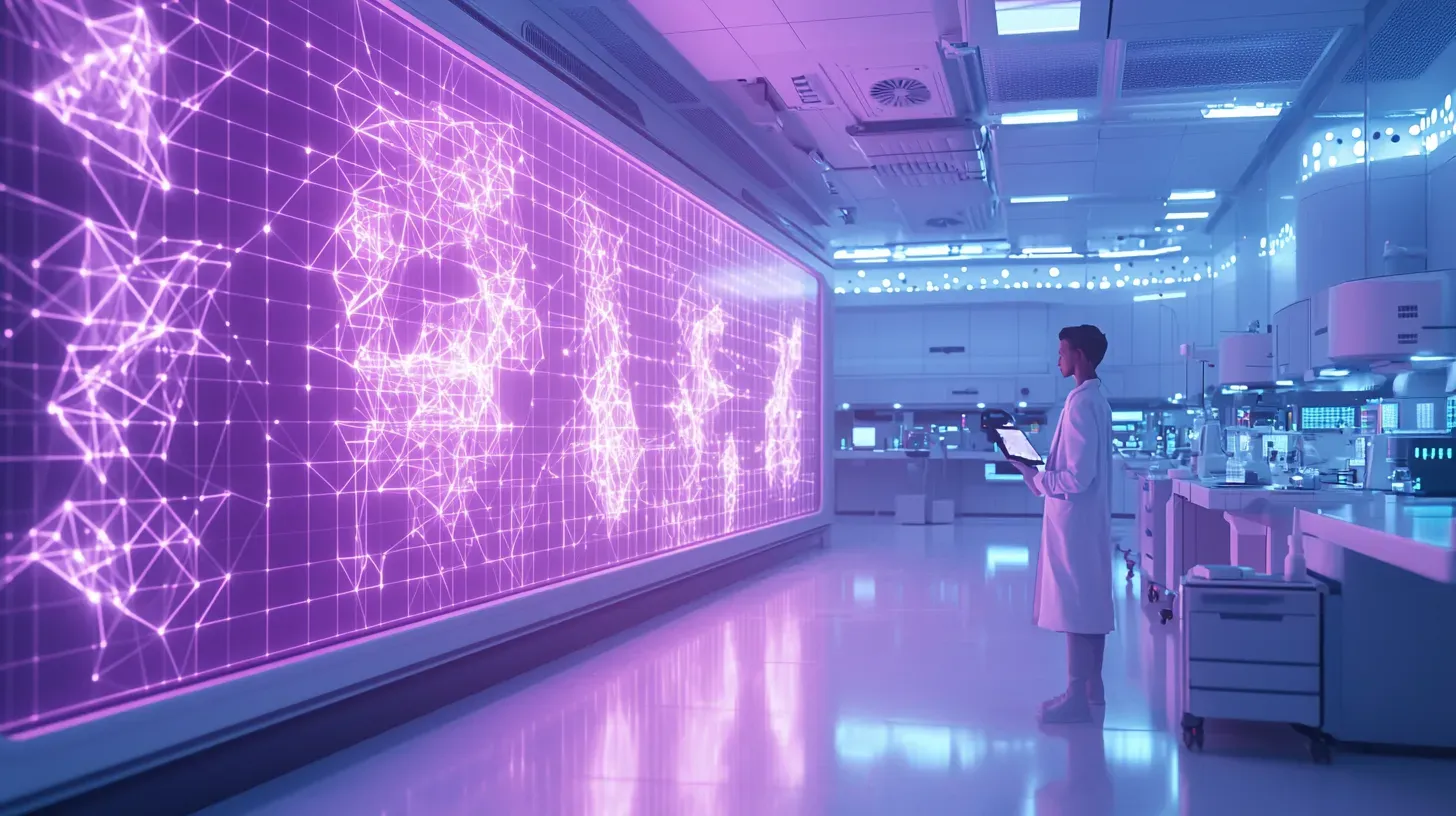Strategy Futurist's Guide to Understanding Autonomous Vehicles

Strategy Futurist's Guide to Understanding Autonomous Vehicles
In today's rapidly evolving world, the emergence of autonomous vehicles has taken the transportation industry by storm. These self-driving wonders are the epitome of technological advancement and have the potential to revolutionize our daily lives. As a strategy futurist, it is crucial to stay ahead of the curve and understand the intricacies of these fascinating machines.
Understanding the Concept of Autonomous Vehicles
Before delving into the depths of autonomous vehicles, it is crucial to grasp the fundamental concept behind them. Simply put, autonomous vehicles are cars, trucks, or any mode of transportation that can operate without human intervention. These vehicles utilize a multitude of advanced technologies, including sensors, artificial intelligence, and machine learning algorithms. Through this powerful combination, they can navigate roads, monitor surroundings, and make crucial decisions, all without human input.
The concept of autonomous vehicles may seem surreal, but it has been in the making for decades. From Hollywood movies depicting futuristic self-driving cars to the development efforts of tech giants like Tesla and Google, the idea of having computer-controlled transportation has captured our collective imagination. Now, it is no longer just a product of fantasy but a tangible reality on the brink of transforming our everyday lives.
Autonomous vehicles rely on a complex network of sensors to perceive their environment. These sensors include cameras, lidar, radar, and ultrasonic sensors, which work together to gather data about the vehicle's surroundings. Cameras capture visual information, allowing the vehicle to recognize objects, signs, and traffic lights. Lidar sensors use laser beams to create a detailed 3D map of the vehicle's surroundings, enabling precise distance measurement and object detection. Radar sensors use radio waves to detect objects, providing information about their speed and distance. Ultrasonic sensors, on the other hand, use sound waves to detect nearby objects, helping the vehicle navigate in tight spaces.
Once the autonomous vehicle has collected data from its sensors, it processes this information using artificial intelligence algorithms. These algorithms analyze the data, identifying objects, predicting their behavior, and making decisions based on the current road conditions. Machine learning plays a crucial role in improving the vehicle's performance over time. As the vehicle gathers more data and learns from its experiences, it becomes better equipped to handle different scenarios, making it safer and more reliable.
The development of autonomous vehicles has not been without its challenges. One of the main hurdles is ensuring the safety of both passengers and pedestrians. Extensive testing and validation processes are necessary to ensure that the vehicle can handle various road conditions and unexpected situations. Additionally, legal and regulatory frameworks need to be established to govern the operation of autonomous vehicles on public roads. These frameworks must address issues such as liability, insurance, and cybersecurity to ensure a smooth transition to a future where autonomous vehicles are the norm.
Despite the challenges, the potential benefits of autonomous vehicles are immense. They have the potential to significantly reduce traffic accidents, as human error is responsible for the majority of crashes. Autonomous vehicles can also improve traffic flow, as they can communicate with each other and make coordinated decisions, reducing congestion. Additionally, they have the potential to increase accessibility for individuals who are unable to drive due to age, disability, or other reasons.
The future of autonomous vehicles is promising, with ongoing research and development pushing the boundaries of what is possible. As technology continues to advance, autonomous vehicles will become more sophisticated, capable of handling complex scenarios and providing a seamless transportation experience. From commuting to work to long-distance road trips, autonomous vehicles have the potential to revolutionize the way we travel, making it safer, more efficient, and more enjoyable.
Role of a Strategy Futurist in Grasping Autonomous Vehicles
As a strategy futurist, your role extends far beyond merely understanding the concept of autonomous vehicles. It is your responsibility to foresee their potential implications and guide businesses and individuals through this revolutionary transition.
One crucial aspect of your role is to analyze the impact of autonomous vehicles across various industries. From transportation and logistics to urban planning and insurance, these vehicles are bound to disrupt traditional models and create new opportunities. By exploring these potential impacts, you can identify strategic pathways for businesses to adapt and thrive in the autonomous era.
Moreover, as a strategy futurist, you must delve into the intricate details of autonomous vehicle technology. Understanding the underlying mechanisms, such as artificial intelligence algorithms, sensor fusion, and advanced control systems, allows you to provide valuable insights to your clients. By staying up-to-date with the latest advancements in autonomous vehicle technology, you can help businesses leverage these innovations to gain a competitive edge.
Furthermore, a strategy futurist must predict the trends and challenges that accompany autonomous vehicles. This involves keeping a close eye on technological advancements, regulatory changes, and societal shifts. By understanding these dynamics, you can assist your clients in navigating the complexities of this transformative journey.
Additionally, your role as a strategy futurist requires you to assess the economic impact of autonomous vehicles. From job displacement to changes in consumer behavior, the introduction of autonomous vehicles will have far-reaching consequences. By conducting thorough economic analyses, you can help businesses and policymakers make informed decisions and develop strategies to mitigate any negative effects.
Another essential aspect of your role is to consider the ethical and legal implications of autonomous vehicles. As these vehicles become more prevalent on our roads, questions surrounding liability, privacy, and safety arise. By engaging in ethical discussions and monitoring legal developments, you can advise your clients on how to navigate these complex issues and ensure responsible adoption of autonomous vehicles.
Furthermore, a strategy futurist must also consider the societal impact of autonomous vehicles. From reducing traffic congestion and carbon emissions to improving accessibility and mobility for individuals with disabilities, these vehicles have the potential to transform our cities and communities. By understanding the social implications, you can guide businesses and policymakers in harnessing the positive aspects of autonomous vehicles while addressing any potential challenges.
In conclusion, the role of a strategy futurist in grasping autonomous vehicles goes beyond a surface-level understanding. It involves analyzing the impact across industries, staying updated on technological advancements, predicting trends and challenges, assessing economic implications, considering ethical and legal aspects, and understanding the societal impact. By fulfilling these responsibilities, you can help businesses and individuals navigate the transformative journey of autonomous vehicles and seize the opportunities it presents.
Exploring the Potential Impacts of Autonomous Vehicles
The potential impacts of autonomous vehicles are vast and wide-ranging. One significant area that stands to benefit immensely is transportation efficiency. With self-driving vehicles, traffic congestion could become a relic of the past. These vehicles can communicate with each other and optimize routes, reducing travel times and fuel consumption. Additionally, the increased safety offered by autonomous vehicles has the potential to save countless lives. By eliminating human error, accidents could be reduced significantly.
Imagine a future where you can hop into a self-driving car and effortlessly navigate through a city without worrying about traffic jams. As these autonomous vehicles seamlessly communicate with each other, they can coordinate their movements, ensuring smooth traffic flow and minimizing delays. This not only saves valuable time for commuters but also reduces fuel consumption and greenhouse gas emissions, contributing to a cleaner and more sustainable environment.
Furthermore, the enhanced safety features of autonomous vehicles have the potential to revolutionize road travel. Human error, which is responsible for the majority of accidents on our roads, would be eliminated. Self-driving cars are equipped with advanced sensors and artificial intelligence systems that can detect and respond to potential hazards in milliseconds. This means that accidents caused by distracted driving, drunk driving, or reckless behavior could be drastically reduced, making our roads much safer for everyone.
Another realm where autonomous vehicles can bring about substantial change is urban planning. As cities become more tailored to accommodate self-driving cars, parking spaces could be repurposed for parks or commercial areas, improving the quality of urban life. Imagine strolling through a city where parking lots have been transformed into vibrant green spaces, providing a breath of fresh air amidst the concrete jungle. With the need for parking reduced, urban planners can focus on creating pedestrian-friendly spaces, encouraging active transportation and fostering a sense of community.
However, this paradigm shift in our urban landscapes will require foresight and planning. As a strategy futurist, your expertise will be invaluable in envisioning and designing cities of the future that seamlessly integrate autonomous vehicles. Consider the possibilities of smart infrastructure, where roads and traffic signals are interconnected, optimizing traffic flow and reducing congestion even further. Picture a city where autonomous shuttles provide convenient and efficient transportation for residents, connecting neighborhoods and reducing the reliance on private car ownership.
Moreover, the introduction of autonomous vehicles opens up new opportunities for industries and businesses. With self-driving delivery vehicles, the logistics sector can streamline operations and improve efficiency. Imagine a world where packages are delivered by autonomous drones or robots, eliminating the need for human drivers and reducing delivery times. This technological advancement has the potential to revolutionize e-commerce and transform the way goods are transported and distributed.
In conclusion, the potential impacts of autonomous vehicles are not limited to transportation efficiency and safety. They extend to urban planning, environmental sustainability, and the transformation of industries. As we embrace this technological revolution, it is crucial to consider the broader implications and seize the opportunities it presents. With your strategic foresight and expertise, you can play a vital role in shaping a future where autonomous vehicles enhance our lives in ways we have yet to fully imagine.
How a Strategy Futurist Can Predict Trends and Challenges in Autonomous Vehicles
Predicting trends and challenges in the realm of autonomous vehicles is not an easy task. However, as a strategy futurist, you possess the critical skills and knowledge required to navigate this ever-changing landscape.
Firstly, you must stay abreast of the latest technological advancements in the autonomous vehicle sector. By understanding the cutting-edge developments in sensors, artificial intelligence, and machine learning, you can project future trends and identify areas of innovation. This foresight can give your clients a competitive advantage and enable them to adapt their strategies accordingly.
In addition to technology, regulatory changes are another crucial aspect to consider. As autonomous vehicles become more prevalent, governments around the world are developing policies and guidelines to ensure their safe integration into society. By keeping a close eye on these shifts, you can anticipate challenges and help your clients navigate the regulatory landscape.
The Future of Transportation: Insights from Autonomous Vehicles
Autonomous vehicles are not just about advanced technology; they represent a glimpse into the future of transportation. The possibilities and implications are awe-inspiring, and as a strategy futurist, it is essential to harness this potential for the benefit of your clients.
As we embrace self-driving cars and trucks, we are embarking on a journey towards safer, more efficient, and sustainable transportation. This shift holds the promise of reducing traffic congestion, increasing road safety, and minimizing the environmental impact of transportation. Furthermore, it opens up new opportunities for businesses to innovate and thrive in a world where autonomous vehicles are the norm.
However, it is crucial to approach this future with caution and an understanding of the challenges that lie ahead. From ethics and security concerns to job displacement and societal adaptation, there are numerous hurdles to overcome. By considering these aspects and developing robust strategies, you can guide your clients towards a successful transition into this new era of transportation.
As a strategy futurist, the guide to understanding autonomous vehicles is not just about comprehending the technology; it is about envisioning the possibilities, analyzing the impacts, and guiding others through this transformative journey. By embracing the role of a futurist and staying at the forefront of this technological revolution, you can shape a better future for businesses and society alike.
FAQ
1. What are autonomous vehicles?
Autonomous vehicles are cars, trucks, or any mode of transportation that can operate without human intervention. These vehicles utilize advanced technologies such as sensors, artificial intelligence, and machine learning algorithms to navigate roads and make decisions.
2. How do autonomous vehicles perceive their environment?
Autonomous vehicles rely on a complex network of sensors, including cameras, lidar, radar, and ultrasonic sensors, to perceive their environment. These sensors gather data about the vehicle's surroundings, allowing it to recognize objects, signs, and traffic lights.
3. What are the potential impacts of autonomous vehicles?
Autonomous vehicles have the potential to significantly reduce traffic accidents, improve traffic flow, and increase accessibility for individuals who are unable to drive. They can also revolutionize urban planning, enhance safety, and create new opportunities in various industries such as logistics and delivery.
Contact a Strategy Futurist for your event
Are you ready to take your event to the next level? Do you want to inspire and engage your audience with insights into the future of technology and transportation? Look no further than Dr. Mark van Rijmenam, a renowned Strategy Futurist who can bring a fresh perspective to your event. With his deep understanding of autonomous vehicles and their potential impacts, Dr. van Rijmenam is the perfect speaker to captivate your audience and provide them with valuable insights.
By hiring Dr. Mark van Rijmenam for your next event, you can ensure that your audience is not only informed but also inspired. His expertise in autonomous vehicles and his ability to predict trends and challenges in this rapidly evolving field will leave your attendees with a sense of excitement and anticipation for the future. Whether you are hosting a conference, seminar, or corporate event, Dr. van Rijmenam's engaging speaking style and in-depth knowledge will make your event a memorable success.
Contact us today to book Dr. Mark van Rijmenam as a speaker for your event. We guarantee a response within 24 hours, and our team will work closely with you to tailor his presentation to meet the specific needs and goals of your event. Don't miss out on the opportunity to have a Strategy Futurist of Dr. van Rijmenam's caliber share his insights and expertise with your audience. Contact us now and elevate your event to new heights!
Thanks for your inquiry
We have sent you a copy of your request and we will be in touch within 24 hours on business days.
If you do not receive an email from us by then, please check your spam mailbox and whitelist email addresses from @thedigitalspeaker.com.
In the meantime, feel free to learn more about The Digital Speaker here.
Or read The Digital Speaker's latest articles here.





